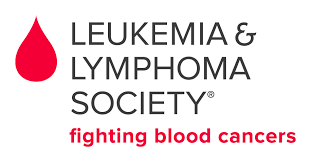Diagnosing CML usually involves a series of blood and bone marrow tests. After your doctor takes samples of your blood and bone marrow, a hematopathologist, a specialist who studies blood cell diseases, confirms the diagnosis and identifies your CML phase.
When examining your blood and bone marrow cells, your hematopathologist will confirm the CML diagnosis by the presence of the Philadelphia (Ph) chromosome and the number of cells with the BCR-ABL oncogene. BCR-ABL oncogene is a mutated gene that tells your cancer cells to make a specific type of protein that leads to CML.
Tests your doctor may use to diagnose CML are blood tests, bone marrow tests, cytogenetic analysis, fluorescence in situ hybridization (FISH) or polymerase chain reaction (PCR). If you are diagnosed with CML, you will then undergo blood and bone marrow tests during therapy to measure your treatment response.
In order to make a CML diagnosis, your blood work will need to be sent to a lab for testing. Doctors at the testing facility will do a complete blood count (CBC), which shows the number of red cells, white cells and platelets in the blood. If you do have CML, you will have a lower-than-normal number of red cells, an abnormal number of platelets and a high number of white cells.
In addition to this, the doctor will do a blood cell examination, which shows whether you have leukemic blast cells and marrow cells in your blood. If you have CML, there will be a high proportion of white cells called myelocytes and neutrophils.
Bone marrow testing involves two steps usually done at the same time: a bone marrow aspiration to remove a liquid marrow sample and a bone marrow biopsy to remove a small amount of bone filled with marrow.
These tests measure the number and structure of the chromosomes, confirm blood test findings and determine if there is a chromosome abnormality, such as the Ph chromosome.
A cytogenetic analysis test identifies certain changes in chromosomes and genes. For the test, your hematopathologist will look at how your chromosomes are mapped, called a karyotype. If your doctor detects the Ph chromosome on the karyotype and other tests show a high white cell count, the CML diagnosis is confirmed.
FISH is a sensitive test that can detect BCR-ABL by using fluorescent dyes. A standard cytogenetic analysis can detect the Ph chromosome in about 90 percent of CML patients. Some patients show no evidence of the Ph chromosome during basic cytogenetic testing, but the FISH test may detect the presence of the abnormal BCR-ABL gene.
This test is used to diagnose CML and to track response to therapy once treatment has begun and can be performed with either blood or bone marrow cells. It is an extra-sensitive test that can detect and measure BCR-ABL oncogenes not found by other tests, such as FISH. PCR allows a more sensitive follow-up of patients in remission and can help determine whether additional treatment is needed.
Phases
The phase of your chronic myeloid leukemia (CML) plays a large part in determining the type of treatment you'll receive. CML has three phases: chronic phase, accelerated phase and blast crisis phase.
Each phase describes CML's progression, determined by the number of blast cells (white cells that don't fully form as they should, blocking production of functioning blood cells) in the blood and bone marrow.
Most patients are diagnosed during CML's chronic phase when symptoms are mild or not noticeable. During this phase, your white cells can still fight infection and long-term drug therapy is used to control your CML. Once treatment has started, patients can usually return to normal activities.
A small number of patients diagnosed and treated during the chronic phase progress to the accelerated phase.
If you're diagnosed during accelerated phase CML, you may have:
- A lower-than-normal number of red cells
- A lower-than-normal number of platelets
- An increase or decrease in white cells
- A high number of blast cells in the blood and bone marrow
- A swollen spleen, which can cause stomach discomfort
- A general feeling of ill health
If you're diagnosed in CML's blast crisis phase, you usually have an increased number of blast cells in your bone marrow and blood. In addition, blast crisis phase patients also have a lower-than-normal number of red cells and platelets.
In this phase, it is common to experience infection, bleeding, a lack of energy or feelings of tiredness, shortness of breath, stomach pain or bone pain.
Once CML reaches this more severe, advanced phase, its effects on patients are similar to those caused by an acute leukemia and can be life-threatening. In about 25 percent of people, the transformation in the blast crisis takes on the appearance of acute lymphoblastic leukemia (ALL), while in the majority it takes on the appearance of acute myeloid leukemia (AML).
To learn more, visit The Leukemia and Lymphoma Society.
 Content provided by:
Content provided by: